What Are Katana Handles Made Of?

What’s in this article?
The handle of the katana is made of many parts with unique functions, which all equally contribute to the superb handling of the sword. Each of these different handle fittings is held by each other without the use of screws or glue, making it possible to dismantle and review each part individually.
In this article, we will peel back the layers of the katana handle to show you exactly what it is made of. We will start from the blade tang on the bottom, work our way to the top and then explore the pommel to the guard.
Full Tang Blade
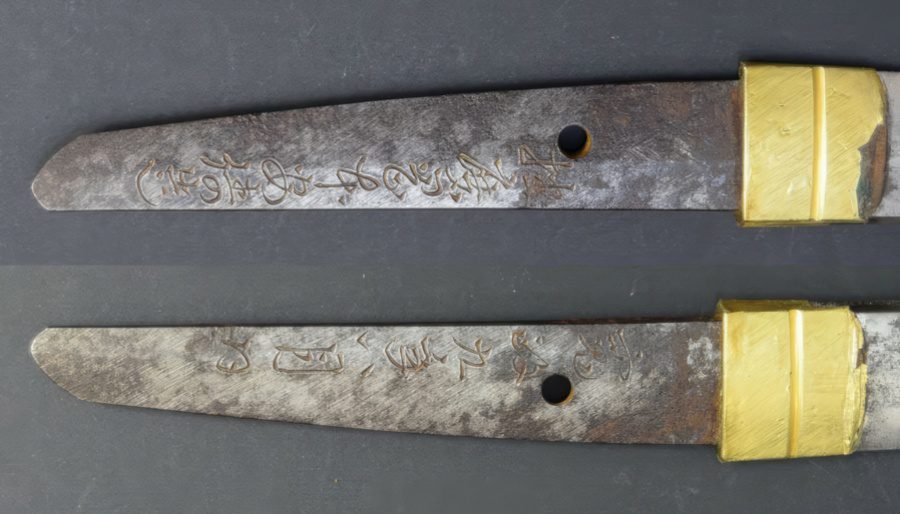
Functional katana swords have a full-tang blade that is meant to cut but is unsharpened, slightly broadened, and placed underneath the handle. The full tang blade of the katana is called nakago, and it is crucial to the sword because it gives it stability, balance of weight, overall strength to the blade, and a place for the user’s hands to wrap around the handle.
The full tang blade of the katana has one or two holes placed in the central line called mekugi–ana. The tang also has inscriptions that the swordsmith produced called mei. On top of the full tang blade comes the wooden handle core.
Wooden Handle Core
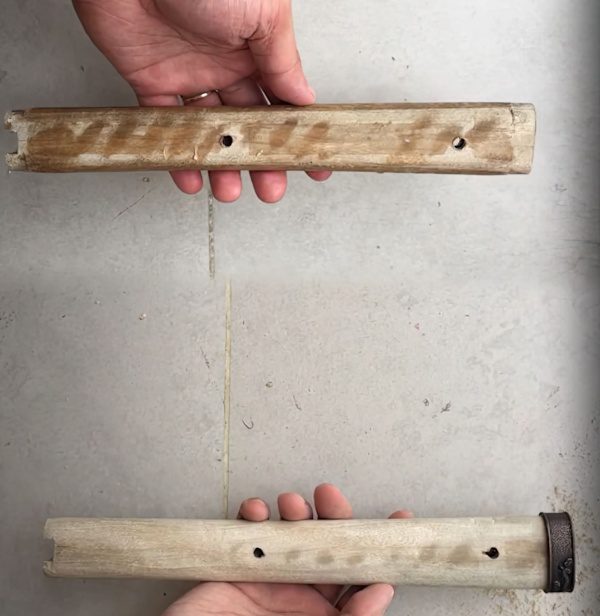
Two wooden handle sides specifically designed in direct proportion with the full tang blade are combined into one wooden handle core that slides on the tang. This wood is underneath the other handle pieces, and while it is an important part of the design, it cannot be seen when all the other parts are mounted.
Samegawa
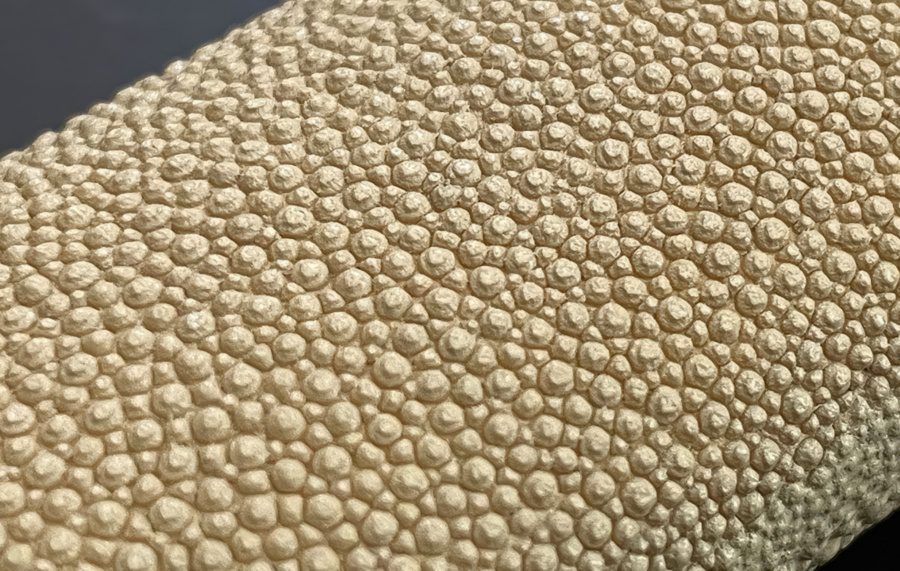
The samegawa is the first layer wrapped around the wooden handle core. It is traditionally made out of ray skin, often referred to as shark skin in Japanese. Sometimes, it can be made of silk, leather, or plastic for decorative katanas. This samegawa can be wrapped around the handle fully, partially in the center, and wrapped with an extra layer.
It is traditionally white with a small bubble-like texture in different patterns called samehada. Aside from being aesthetically pleasing, this rough texture creates an uneven pattern that is excellent for handling the katana and absorbing any moisture from the user’s hands. On top of the samegawa comes the tsuka–ito cord.
Tsuka-Ito, Tsuka-Maki and Makidome

The tsuka–ito is the visible cord wrapped around the katana’s handle. It is placed on top of the samegawa and can be created with several materials, such as silk, cotton, and leather. The ito wrap holds everything in place and is a crucial part of the handle.
The different patterns visible on the tsuka–ito are called tsuka–maki, the art of creating these variations. They can come in various styles, such as kata-hineri-maki, fuji-maki, katate-maki, and shino-maki. While pleasing to the eye, the tsuka–maki wrap creates an uneven rough surface that gives the user a tight grip.
The tsuka–ito is held by the snug wrap that goes around the handle. At the lowest point, the cord wrap is tied in a specific manner called makidome, which goes through the pommel.
Hishigami
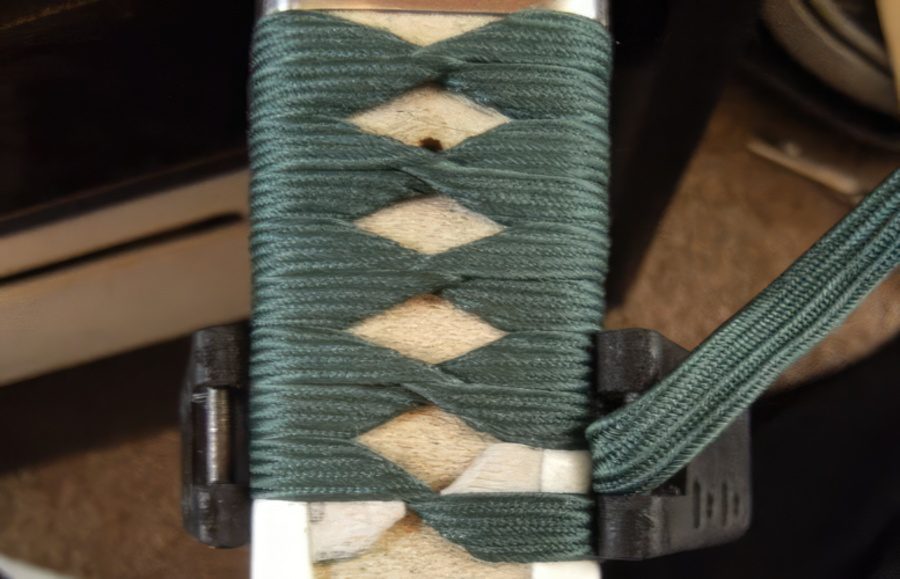
Hishigami are small paper wedges placed on top of the samegawa ray skin and underneath the tsuka–ito cords wraps. While they are optional on the katana, the hishigami make the handle easier to grip. They act as pressure points that can be tightly squeezed but also protect the quality of the samegawa surface.
Hishigami can come in different materials, such as silk, and are generally around 0.39 inches (10mm) wide. Around 60 to 65 hishigami wedges are usually placed on both sides of the handle and underneath the tsuka–maki diamond wraps, which conceal their appearance.
Mekugi
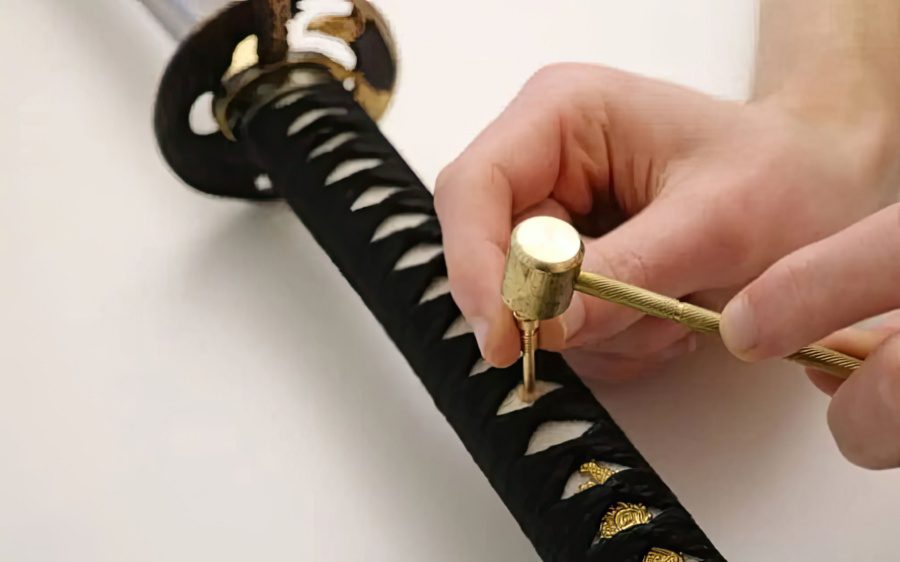
The mekugi-ana hole or double holes in the katana’s blade tang are filled with small bamboo or wooden pegs called mekugi. These important pieces are applied after the previously mentioned parts of the handle, holding the structure intact.
A smaller traditional hammer called mekugi–nuki puts pressure on the mekugi and pushes them on the inside. While they play a similar function to a screw or a nail holding the handle to the blade tang, they are placed in a tight fit and can be loosened, allowing the handle to be easily disassembled.
Menuki
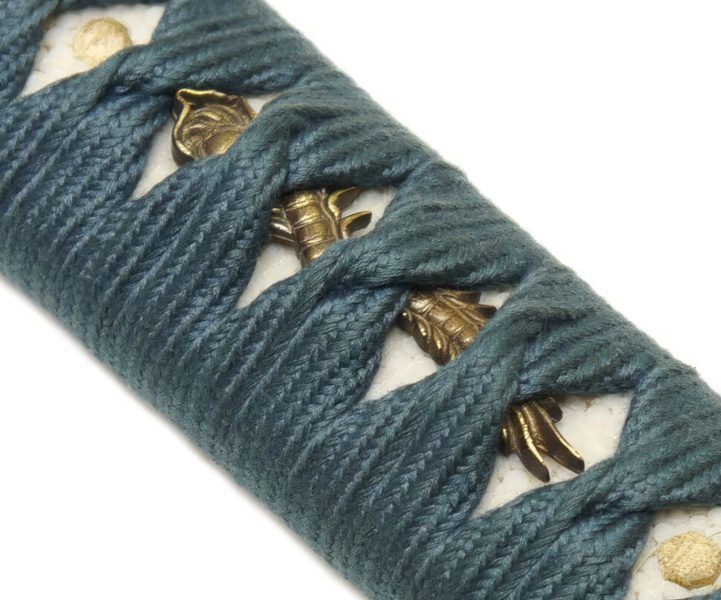
The menuki are the smaller ornaments?commonly made of metal?visible underneath the tsuka–maki wrap and on top of the samegawa ray skin. Menuki can come in several design styles, beginning with flowers, elements of nature, symbols, or animals and ending with mythological creatures. Menuki can be one large design or feature two or three smaller ones.
The menuki are sometimes added on top of the mekugi pins to hide them, and while they add certain characteristics to the sword’s handle, the menuki also has a practical use. They add to the unstable surface of the handle, which, overall, creates a superior grip.
Kashira
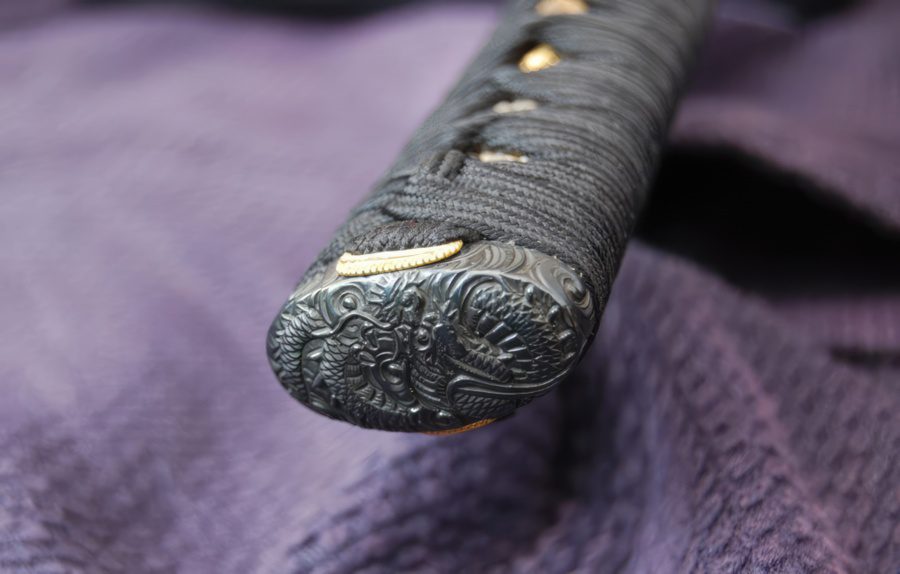
The pommel of the katana sword is called kashira, which is placed on the bottom and top of the wooden handle core. It is tightly connected with the tsuka–ito through the makidome wrap. The kashira is traditionally created from strong materials such as brass, iron, copper, and silver.
While their function is to hold the katana handle together, they give more balance and stability to the sword, along with acting as a decorative piece that can be inlaid with precious metals, copper, or gold, following the overall theme of the sword.
Fuchi
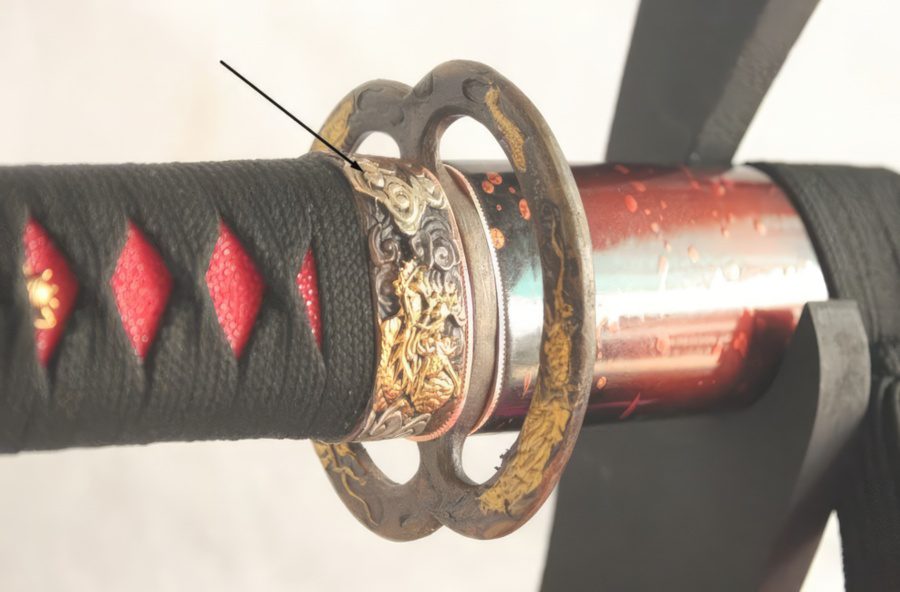
The fuchi is the metal piece placed on the top of the tsuka handle and just below the tsuba guard. This piece of the handle looks like a sleeve and holds it intact from above, while the kashira secures it from the bottom. Because it reinforces the entire katana handle, it should be created from strong materials such as iron, copper, or brass.
The fuchi also acts as a visible decorative piece resembling the kashira pommel or the menuki ornaments.




